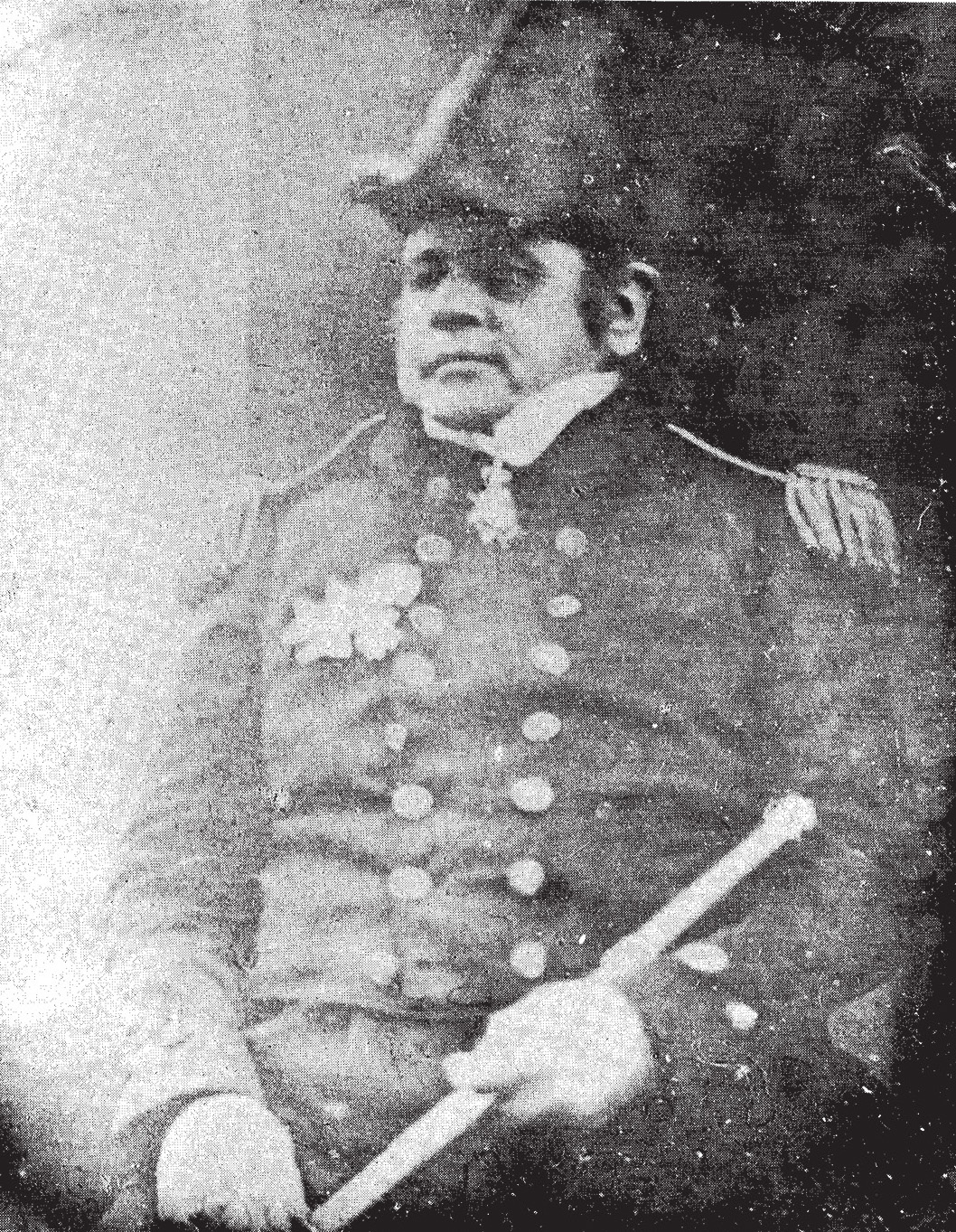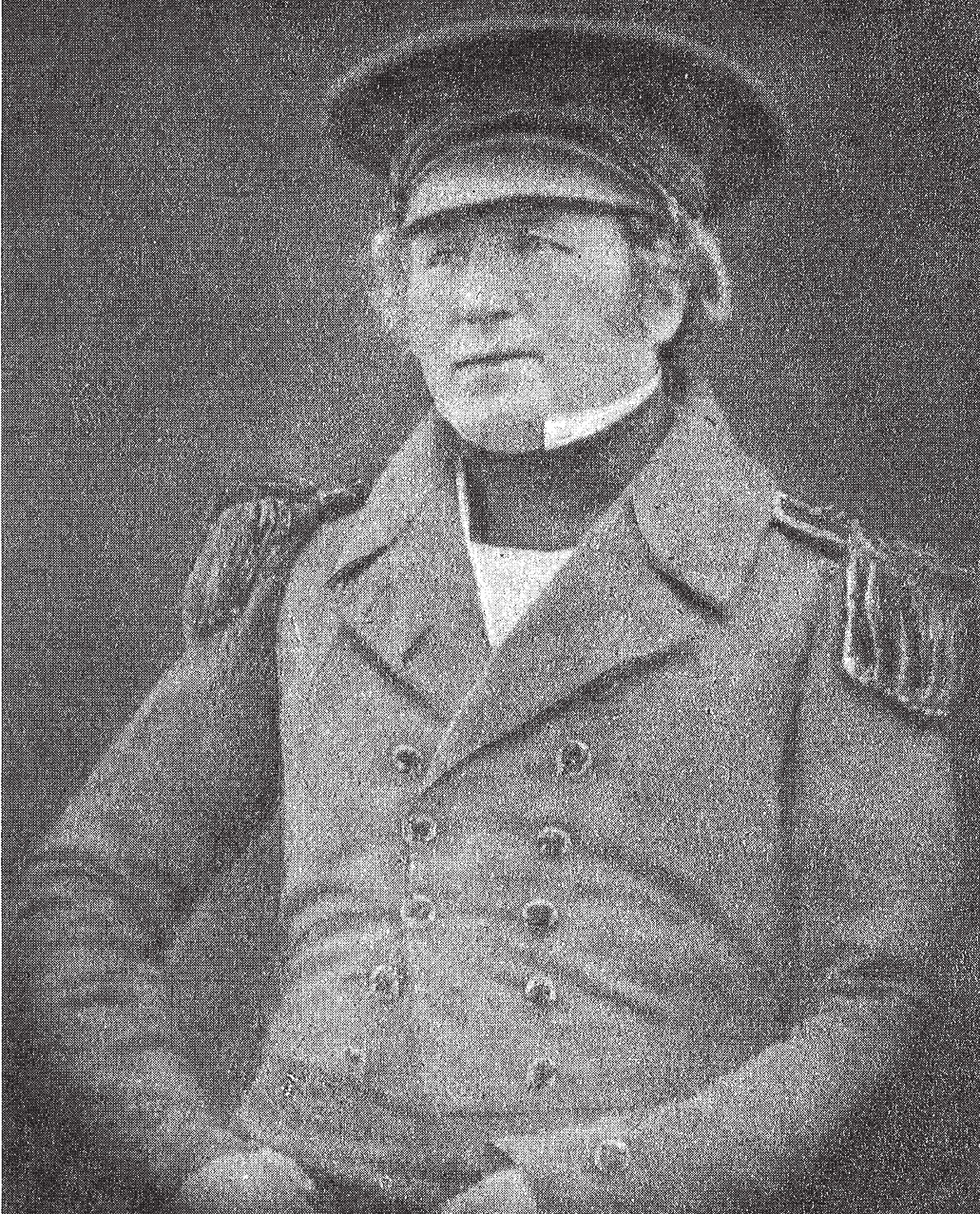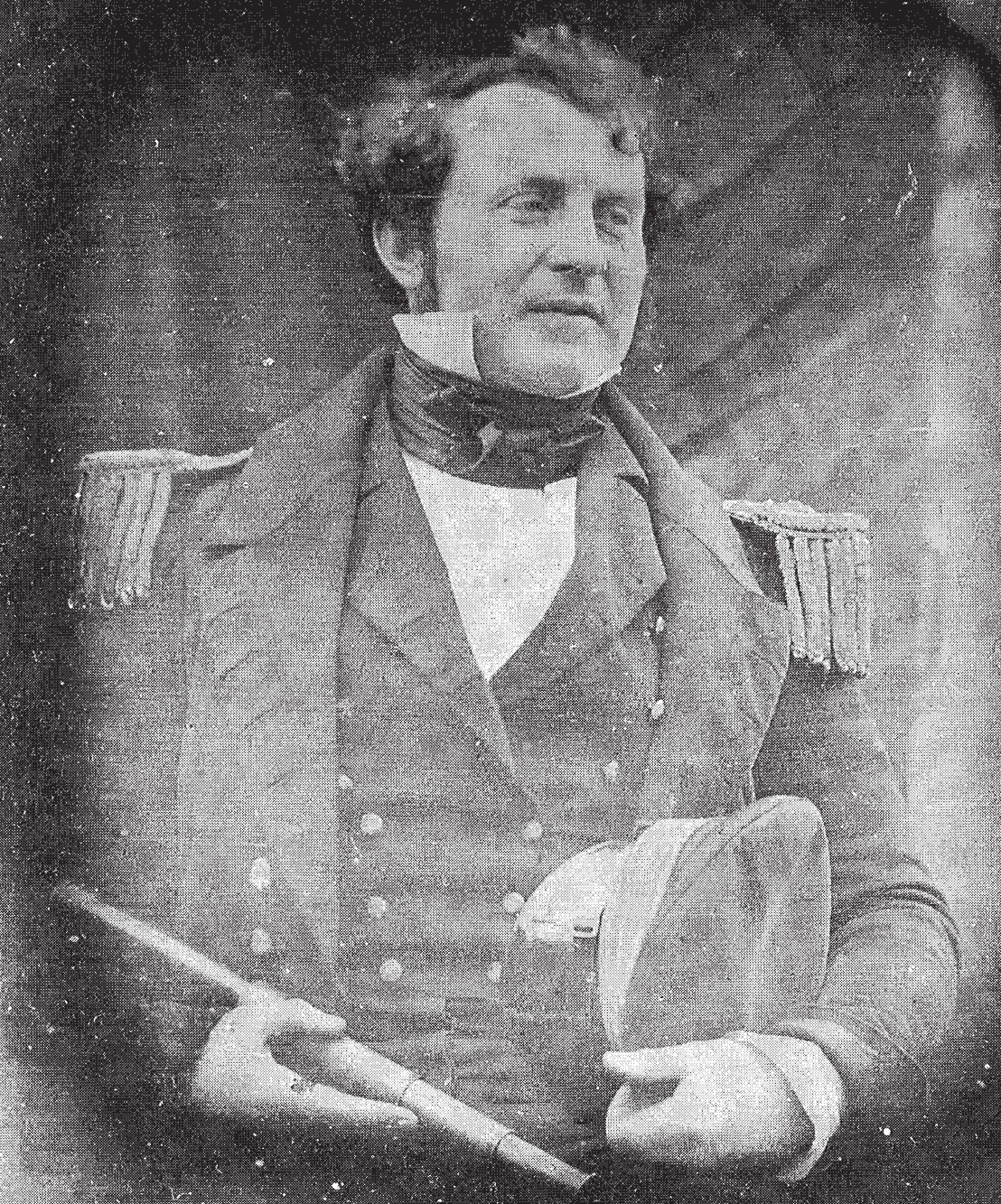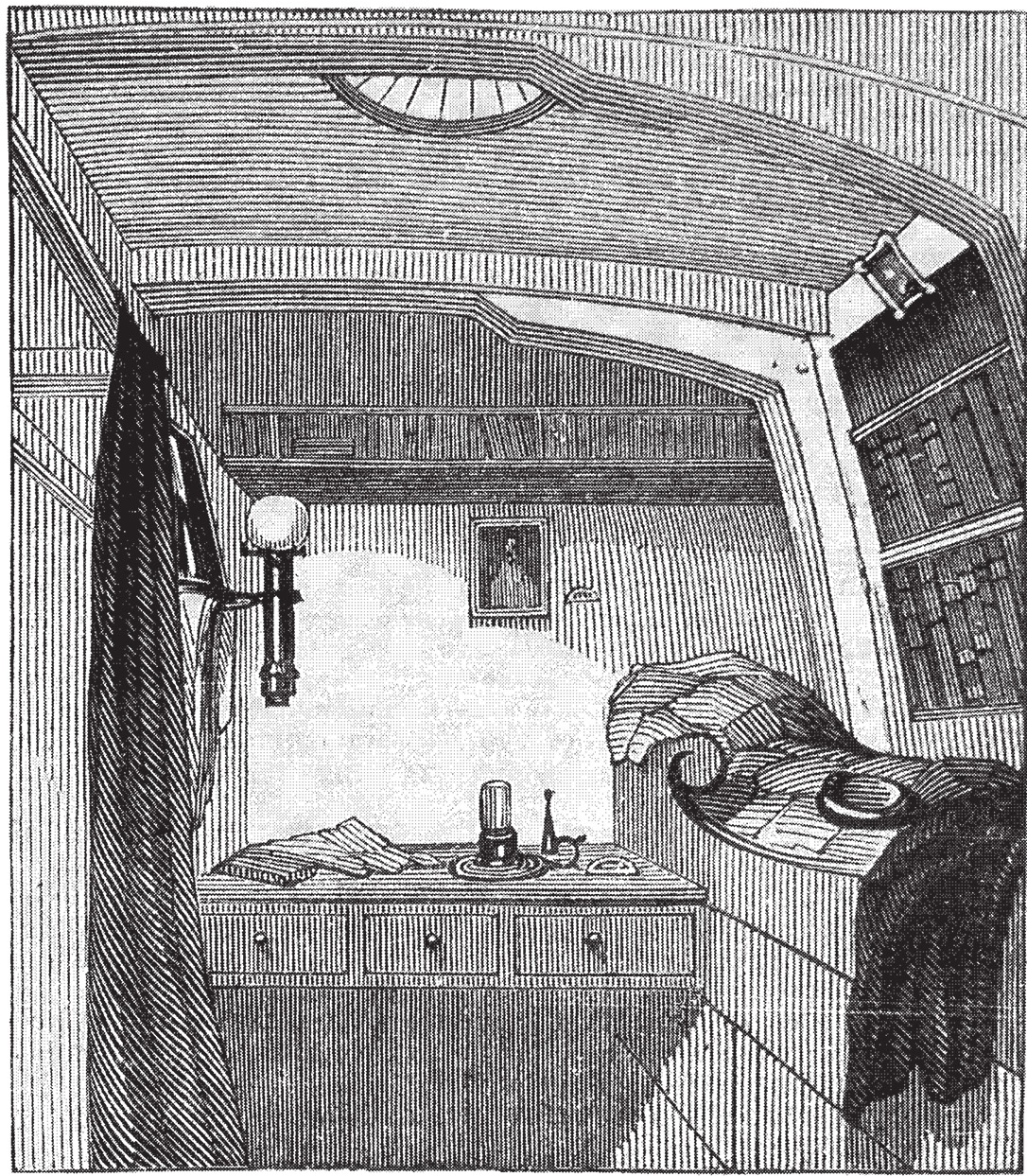Frozen in Time (4 page)

Donaldson, the man who had shown signs of incoherency and who remained in a “drowsy stupor,” died on 5 February. On 26 April, he was followed by a Royal Marine named Alexander Young who, before dying, had requested that he be autopsied. The ship's surgeon found Young's liver enlarged, water in the region of the heart and the quality of his blood “poor.” When Back demanded in an official letter to the surgeon, Dr. Donovan, “his opinion of the probable consequences if the ship were detained another winter in these regions,” Donovan's answer was that “it would be fatal to many of the officers and men.” And so, when the
Terror
was ï¬nally released by the ice after ten months, Back ordered the ship, badly leaking, to make for home. With a hull bound round with chain cables to seal the cracks caused by the ice and “in a sinking condition,” the
Terror
somehow limped across the Atlantic. Even then, in July, Back watched in impotent fury as the disease continued to spread: “The whole affair, indeed, was inexplicable to the medical officers as we had the advantage of the best provisions.” As the
Terror
made towards Ireland, the “apprehension of sickness had induced most of the men to go without food.” Back himself remained an invalid for six months after the dreadful voyage.
The Back expedition was an enormous setback for the Admiralty. Still, there was no attempt by British authorities to examine the causes of the illness amongst Back's crew. Even if there had been, the probable causeâthe expedition's heavy reliance on tinned foods and the absence of fresh meatâwould almost certainly have eluded suspicion. Indeed, four years after Back's return there was a push within the Royal Navy to replace all livestock on expeditions with tinned food. Wrote Captain Basil Hall:
Meat thus preserved eats nothing, nor drinksâit is not apt to dieâdoes not tumble overboard or get its legs broken or its ï¬esh worked off its bones by tumbling about the ship in bad weatherâit takes no care in the keepingâit is always ready, may be eaten hot or cold, and this enables you to toss into a boat as many days' cooked provisions as you require.
In 1844, Second Secretary to the Admiralty John Barrow argued for one ï¬nal attempt to complete the Northwest Passage. Barrow wanted to ï¬nish what he had started a quarter-century before, fearing that England, having “opened the East and West doors, would be laughed at by all the world for having hesitated to cross the threshold.” Glossing over Back's setback, Barrow, in his bid for funding, opted to focus instead on a gloriously successful trio of Antarctic cruises undertaken by John Ross's nephew, James Clark Ross, from 1839â43:
There can be no objection with regard to any apprehension of the loss of ships or men. The two ships that recently were employed among the ice of the Antarctic sea after three voyages returned to England in such good order as to be ready to be made available for employment on the proposed North-West expedition; and with regard to the crews, it is remarkable that neither sickness nor death occurred in most of the voyages made into the Arctic regions, North or South.
As far as Barrow was concerned, he had the right ships, the
Erebus
and
Terror,
and he had the right commander in Ross.
James Clark Ross's Antarctic expedition had charted some 500 miles (805 km) of the southern continent's coastline, discovered the Antarctic ice shelf and sighted a smoking volcano, which Ross named Mount Erebus after his ship (a nearby crater was named Mount Terror after the smaller of the two vessels). When he returned to England in the autumn of 1843, Ross had earned himself the title of the world's leading polar discoverer. The expert in ornithology and the science of terrestrial magnetism was knighted and presented with the Founder's Medal of the Royal Geographical Society. He cut quite a dash in Victorian society, and was once said to be “the handsomest man in the Royal Navy,” no small compliment given the preening to which the officer class was prone.
The
Erebus
and
Terror
were not nearly so handsome. Royal Navy bomb vessels designed for shore bombardment, they were sturdily built to withstand the recoil of their 3-ton (3.1-tonne) mortars. But the
Terror,
in particular, had an interesting history. Built in 1813, a ship of that name was engaged the following year in the Battle of Baltimore, which saw British ships of war ï¬ring bombs, rockets and cannons at Fort McHenry. The 25-hour barrage failed to dislodge the Americans and gave rise to the U.S. National Anthem, the
Star-Spangled Banner,
with its reference to “the rockets' red glare.” The
Terror
later saw service in the Mediterranean before it was sailed into Hudson Bay under the command of George Back. After its narrow escape from the Arctic, the
Terror,
together with the
Erebus,
was reinforced for protection against the ice for Ross's Antarctic voyages.
Further reinforcements were made for the planned Northwest Passage expedition, set to embark in May 1845, including covering the ships' bows with sheet iron. Other changes were made to assist the expedition as it made its way through Arctic waters. The ships were ï¬tted with a tubular boiler and steam-forming apparatus, which conveyed hot water in pipes under the decks to warm the men's berths and all other parts of the vessels. Desalinators were built into the galley stoves. In a revolutionary step, entire steam locomotives with specially adapted screw propellers were also installed, for emergency use. A 25-horsepower locomotive from the London and Greenwich Railway was bought for the
Erebus,
stripped of its front wheels and installed in the ship's hold. The engine of the
Terror,
at 20 horsepower, was placed in the after-hold.
On 12 May 1845, the
Times
reported:
The Lords Commissioners of the Admiralty have, in every respect, provided most liberally for the comforts of the officers and men of an expedition which may, with the facilities of the screw-propeller, and other advantages of modern science, be attended with great results.
It was, in short, the most technologically advanced and best-equipped exploration team ever. However, it was not to be commanded by James Clark Ross, who declined due to a promise he had made his wifeâto never again undertake a polar expeditionâand a rumoured problem with the drink. Instead, the honour fell to an aging navy veteran, Sir John Franklin.
At ï¬fty-nine, Sir John Franklin was widely considered too old for the command. Lord Haddington, First Lord of the Admiralty, shared the doubts of many about Franklin's ï¬tness but agreed to interview him. During that meeting, the First Lord told Franklin of his concerns. “You are sixty,” he said. Franklin was nonplussed: “No, my lord, I am only ï¬fty-nine.” Still, the Admiralty was nothing if not an old boys' club, and William Edward Parry lobbied on Franklin's behalf, telling Haddington: “If you don't let him go, the man will die of disappointment.” On 7 February 1845, Franklin was given the job.

Daguerreotype of Sir John Franklin.
Born in Spilsby, Lincolnshire, on 16 April 1786, Franklin entered the Royal Navy when he was fourteen and served in a number of famous battles during the Napoleonic Wars, including the Battle of Trafalgar. In 1814, he would be injured in a disastrous attempt to capture New Orleans. When the Duke of Wellington ï¬nally defeated Bonaparte in the Battle of Waterloo in 1815, the Royal Navy was forced to look for new assignments for its best young officers. Arctic exploration was one way for such officers to distinguish themselves in peacetime. And so it was that, in May 1818, Franklin began his polar service as second-in-command of Captain David Buchan's failed voyage into the Spitsbergen ice.
In 1819 Franklin again headed north, this time in command of an overland expedition ordered by the British Admiralty to travel from Hudson Bay to the polar sea, where he was to map North America's unexplored Arctic coast. George Simpson of the Hudson's Bay Company was highly skeptical of Franklin's quali-ï¬cations for such a journey:
Lieut. Franklin, the Officer who commands the party has not the physical powers required for the labor of moderate Voyaging in this country; he must have three meals p diem, Tea is indispensible, and with the utmost exertion he cannot walk above Eight miles in one day, so that it does not follow if those Gentlemen are unsuccessful that the difficulties are insurmountable.
Franklin succeeded in surveying 211 miles (340 km) of the icy shoreline east of the Coppermine River before a tragic return journey over the Canadian tundra, or “Barren Grounds,” during which expedition members were reduced by starvation to eating an old leather shoe and caribou excrement. Ten men died from the cold and hunger, exacerbated in part by Franklin's unfamiliarity with northern conditions. Franklin himself nearly succumbed to starvation before relief arrived. Yet when he returned to London, Franklin's account of heroic achievement marred by murder, cannibalism and his own suffering caught the public's imagination, and he became known as the man who ate his boots. Promoted to the rank of captain, he then returned in 1825â27 to the Arctic for a well-organized second overland expedition, resulting in the mapping of another 397 miles (640 km) of Arctic shoreline, for which he was knighted. Finally, after a six-year stint as colonial governor of Van Diemen's Land (today, the Australian state of Tasmania), Franklin was placed in command of the greatest single expedition of discovery Britain had ever mounted.
Royal Navy officers Captain Francis Crozier and Commander James Fitzjames were also appointed to the expedition. The veteran Crozier had served in a number of earlier attempts at ï¬nding both a Northwest Passage and reaching the North Pole and had been second-in-command of James Clark Ross's Antarctic expeditions as commander of the
Terror.
As for Fitzjames, he had served as mate aboard the ï¬rst steamer to successfully navigate the Euphrates, and had served on ships operating in the Middle East and China, where he ï¬rst became interested in the romantic lure of the Northwest Passage.

Captain Francis Crozier.

Commander James Fitzjames.
The days before the
Erebus
and
Terror
set sail were ï¬lled with social engagements and a general sense of excitement. The conï¬dence of the expedition team was palpable. In a letter to his brother dated 11 April 1845, Harry D.S. Goodsir, the assistant surgeon on the
Erebus,
wrote: “All the Officers are in great hopes of making the passage and expect to be in the Paciï¬c end of next summer.” Franklin and his officers were entertained at the Admiralty on 8 May. The crews were paid in advance of the sailing, and it can be assumed that at least some of the money was spent at the pubs dotting the docklands along the Thames. On 9 May, the ï¬nal official inspection of the ships took place, attended by leading civil and naval ï¬gures and other specially invited guests. The
Illustrated London News
reported that “the arrangements made for the comfort of the officers and crews are excellent. The quantity of stores taken on board is considerable.” According to a
Times
reporter, those stores included “numerous chests of tea, although the crews are not expected to become teetotalers, an ample supply of rum having been provided for their use in the frozen regions.”
Among the food supplies were nearly 8,000 tins of preserved meats (including boiled and roast beef, boiled and roast mutton, veal, seasoned beef and ox-cheek), vegetables (potatoes, parsnips, carrots and mixed vegetables) and soup (of 1-, 2-, 4-, 6- and 8-pound/.5-, 1-, 2-, 3-, 4-kg capacity). They also carried 1,203 pounds (546 kg) of tinned pemmican. Other supplies included 7,088 pounds (3,218 kg) of tobacco, 200 gallons (909 litres) of “wine for the sick” and 9,450 pounds (4,290 kg) of chocolate. Some 9,300 pounds (4,222 kg) of lemon juice were also taken, to be rationed to all during the expedition.
With such vast quantities of provisions and fuel, enough to last three years, the accommodations were congested. Of the living quarters, only Franklin's cabin on the
Erebus
was of any signiï¬cant size. Commander Fitzjames had a cabin less than 6.5 feet (2 metres) wide, with the crew of the
Erebus
berthed in what little space remained (many slung their hammocks alongside one another on the mess deck). Yet despite the cramped quarters, the
Erebus
had a library of 1,700 volumes, the
Terror
carried 1,200, including everything from narratives of earlier Arctic expeditions and geographical journals to Charles Dickens's
Nicholas Nickleby
and bound copies of
Punch
magazine. Each ship also had a hand organ that could play ï¬fty tunes, including ten hymns. There were mahogany writing desks for officers and school supplies for teaching illiterate sailors to read and write. Instruments for research in geology, botany and zoology and for magnetic observation were also taken. The Franklin expedition was also one of the ï¬rst voyages of discovery to carry that relatively new invention: a camera.
No Arctic expedition had ever been so lavishly outï¬tted. The same could be said even for the men, who were issued gear for extreme weather, suggesting a greater willingness on the part of British officialdom to adapt and learn from the Inuit than is generally credited. Indeed, Goodsir reported being issued sealskin gloves, a sealskin cap and greatcoat and a pair of “Deer-skin” trousers.

Commander Fitzjames's cabin on the HMS
Erebus.
On 5 May, Franklin received his official instructions: essentially to sail to Baffin Bay and Lancaster Sound through to the Bering Strait and, in so doing, complete a Northwest Passageâall the while collecting valuable scientiï¬c and geographical information. There were no plans for Admiralty assistance or relief should the expedition encounter difficulty or fail to complete its voyage within the three years it had been supplied for. As a cursory precaution, the Hudson's Bay Company, with its fur-trading outposts at Fort Good Hope and Fort Resolution in what is now Canada's Northwest Territories, was asked to aid the expedition should word of trouble be received. The company was also instructed to alert native traders to watch for Franklin's crews.
In the last few days before he sailed, Franklin may have experienced a premonition of his fate. Suffering from the ï¬u, he was resting at home with his wife, Jane, who had just ï¬nished sewing a silk Union Jack for him to take. Concerned about his illness, she draped the ï¬ag over his legs for warmth. He sprang to his feet: “There's a ï¬ag thrown over me! Don't you know that they lay the Union Jack over a corpse?” But on Sunday 18 May, the eve of his departure, with his wife and daughter present, the profoundly religious Franklin read Divine Service for the ï¬rst time to his crews. And when the expedition sailed from the Thames the next morning, carrying 134 officers and men, most felt the Franklin expedition could not fail. Franklin's only child, Eleanor, wrote to an aunt:
Just as they were setting sail, a dove settled on one of the masts, and remained there for some time. Every one was pleased with the good omen, and if it be an omen of peace and harmony, I think there is every reason of its being true.
The expedition was already out of view when the
Times
trumpeted:
There appears to be but one wish amongst the whole of the inhabitants of this country, from the humblest individual to the highest in the realm, that the enterprise in which the officers and crew are about to be engaged may be attended with success, and that the brave seamen employed in the undertaking, may return with honour and health to their native land.
One week later, the president of the Royal Geographical Society, Sir Roderick Murchison, summed up the public mood in a speech: “The name of Franklin alone is, indeed, a national guarantee.” Besides, the geographical obstacles were by now judged to be not all that great: The cumulative discoveries of preceding Arctic expeditionsâParry, John Ross, George Back, and Franklin's among themâhad resulted in the mapping of much of the southern Arctic archipelago. By 1845, stretches of less than 62 miles (100 km) remained to be explored, and it was to close those gaps that Franklin sailed.
After calling brieï¬y at Stromness Harbour on the island of Orkney, the expedition left Britain for the last time. A transport vessel, the
Barretto Junior,
laden with stores such as ten live oxen, accompanied the ships to the Whaleï¬sh Islands in Disco Bay on the west coast of Greenland, where the oxen were slaughtered for fresh meat and supplies transferred to the
Erebus
and
Terror.
Harry Goodsir wrote to his uncle from Greenland that, “we have got 10,000 cases of preserved ready cooked meats on board the Erebus alone so you see there is no chance of starving.” It was also while at the Whaleï¬sh Islands that the ï¬rst tins of preserved meat, carrots and potatoes were opened, and the contents served to the expedition's officers.
